Found this guy in my cup this morning, dark red/maroon with short antennae, about 4mm total body length. Sorry for the terrible pictures, it was all I could get before I'd be late for work. I'll try to get better ones tonight.
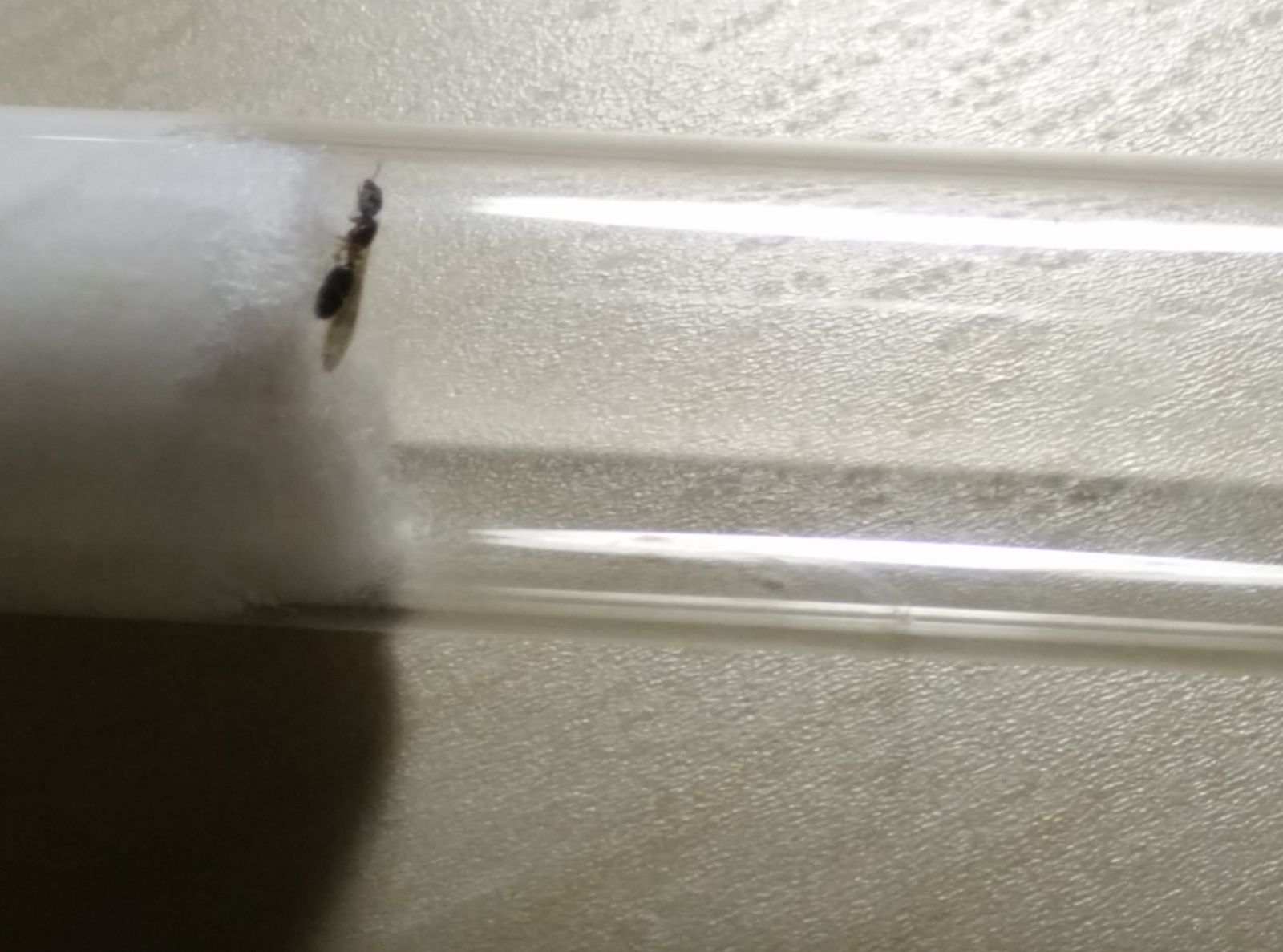
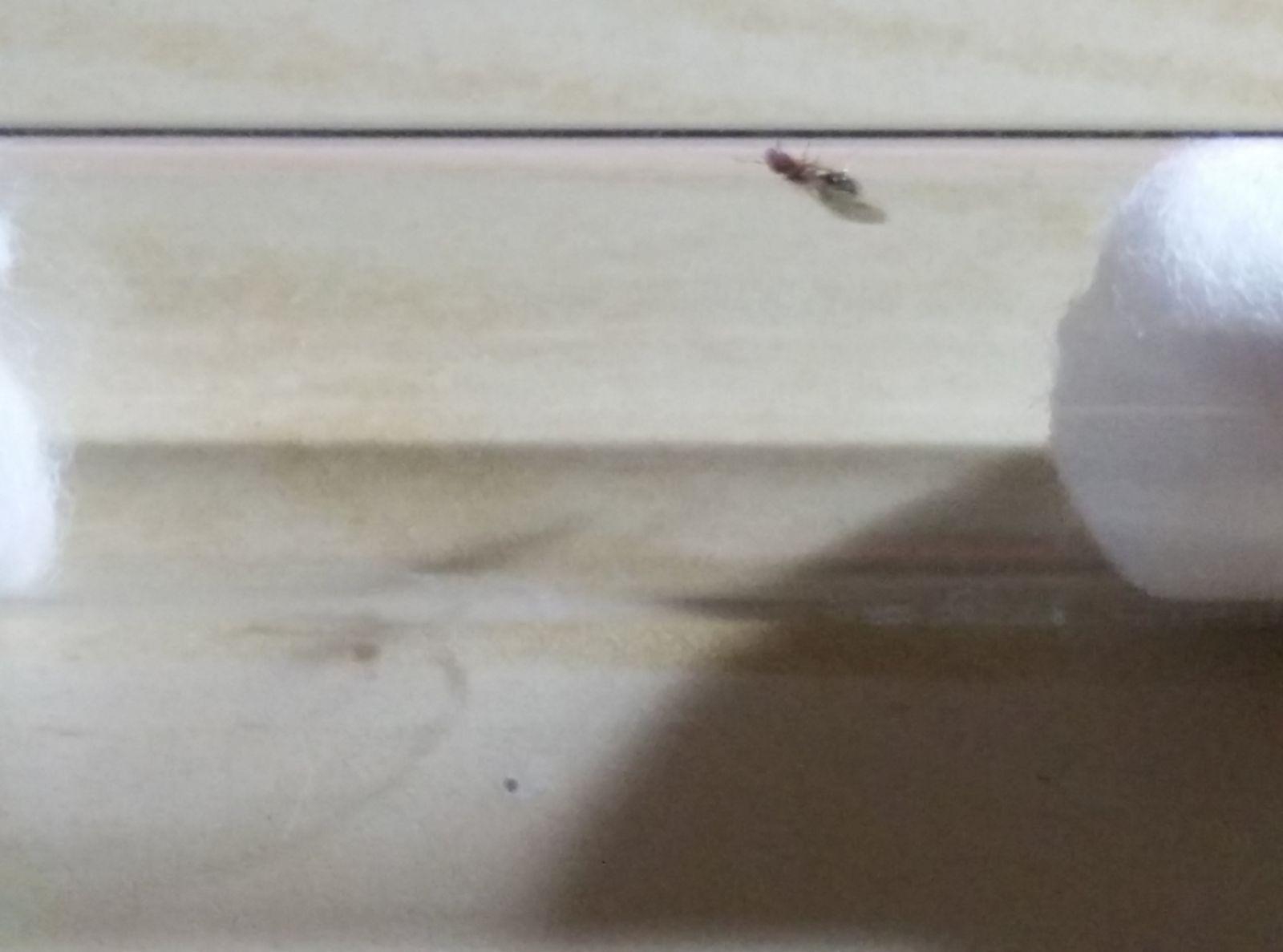
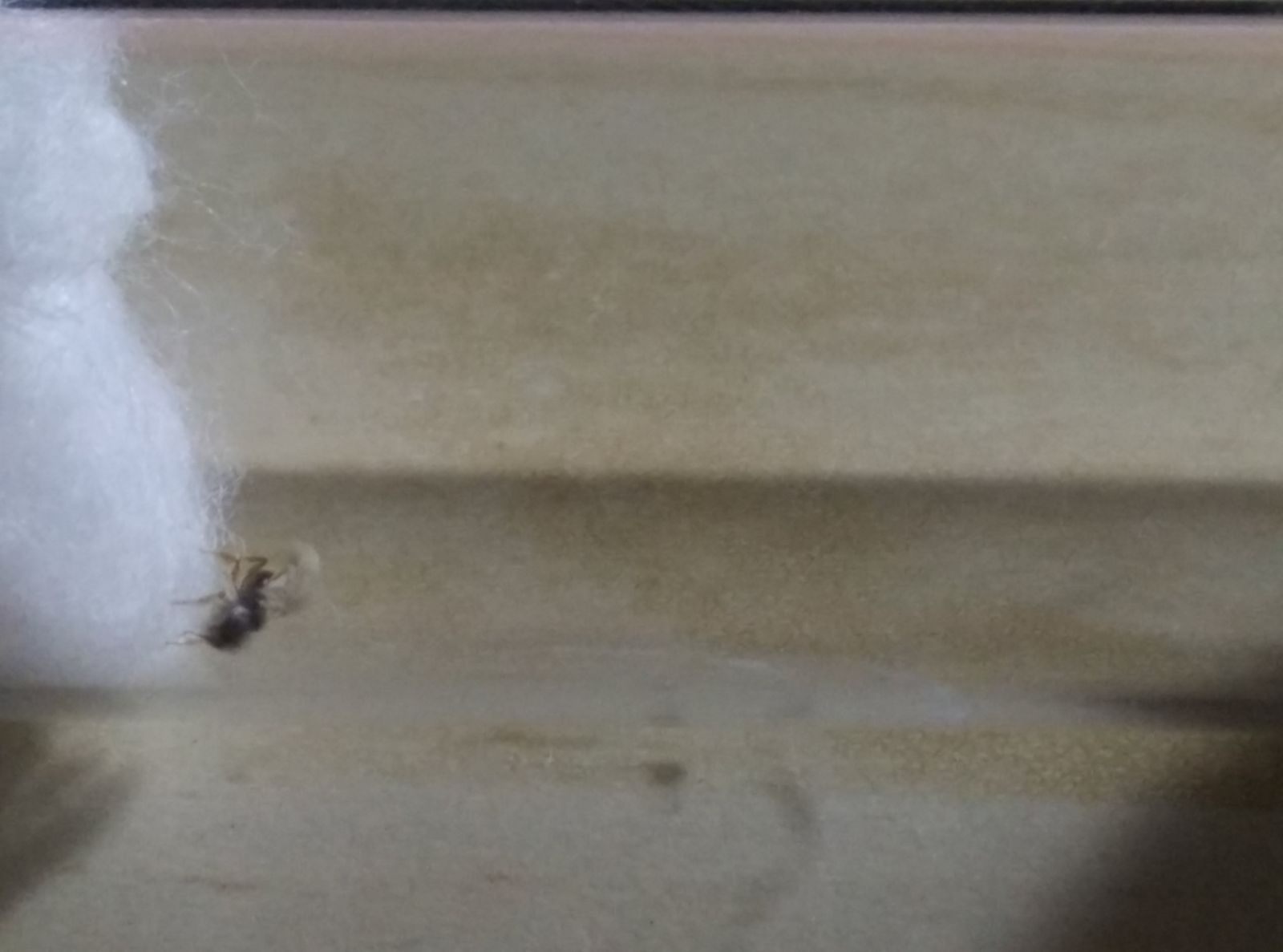

Found this guy in my cup this morning, dark red/maroon with short antennae, about 4mm total body length. Sorry for the terrible pictures, it was all I could get before I'd be late for work. I'll try to get better ones tonight.



Camponotus vicinus, Crematogaster 1, Crematogaster 2, Formica francoeuri, *, *, Myrmecocystus testaceus, Novomessor cockerelli, Pheidole hyatti, Pogonomyrmex californicus, Pogonomyrmex rugosus, Solenopsis invicta
I found a small parasitic wasp about the same size wandering around beside my ant setups, and I dumped it into a Lasius foraging area and they went nuts over it. I guess it smelled very nice, because they detected it quickly and recruited to hunt it down. The wasp looked almost identical to an ant queen, except the antennae were straight.
What you have is an ant. I can't say much more than that.
I think that might be the Pheidole sp. that's been flying lately.
Current Species:
Camponotus fragilis
Novomessor cockerelli
Pogonomyrmex montanus
Pogonomyrmex rugosus
Manica bradleyi
Yes, I was going to say, it's hard to see, but it does have the look of a Pheidole queen. It could be Temnothorax too. Count the antennal segments. If there is less than 12, then it's probably Pheidole. I wonder if it's one of these (http://www.formicult...ated-5-27-2015/).
Looks very similar, I'll get a better picture tonight. I've never seen any Pheidole in my neighborhood (much less the SGV), so in my toothbrush cup of my second floor bathroom of all places is surprising...
Camponotus vicinus, Crematogaster 1, Crematogaster 2, Formica francoeuri, *, *, Myrmecocystus testaceus, Novomessor cockerelli, Pheidole hyatti, Pogonomyrmex californicus, Pogonomyrmex rugosus, Solenopsis invicta
Its an ant.
Look like this? I caught this beautiful queen today.
Looks very, very similar. I got a few more pictures but they aren't any better, hopefully I'll have time to break out the microscope soon.
Camponotus vicinus, Crematogaster 1, Crematogaster 2, Formica francoeuri, *, *, Myrmecocystus testaceus, Novomessor cockerelli, Pheidole hyatti, Pogonomyrmex californicus, Pogonomyrmex rugosus, Solenopsis invicta
Found another one this morning, again in my bathroom sink. Weird because I haven't seen any colonies other than argies and Pogonomyrmex in the neighborhood so I have no idea where these are coming from and why they're attracted to my bathroom. Their antennae seem uniquely small and they themselves are no more than 4mm or so.
Camponotus vicinus, Crematogaster 1, Crematogaster 2, Formica francoeuri, *, *, Myrmecocystus testaceus, Novomessor cockerelli, Pheidole hyatti, Pogonomyrmex californicus, Pogonomyrmex rugosus, Solenopsis invicta
Most of the small Pheidole and Temnothorax queens I find on my black light are species I have never seen before out there in the canyon. They are so tiny, you probably just never notice them.
I think it is the same Pheidole species as the one in the video I linked. They basically flew on the same day as well.
Edited by Gregory2455, July 2 2015 - 3:17 PM.
I think it is the same Pheidole species as the one in the video I linked. They basically flew on the same day as well.
After viewing the video again, I agree. My first one appeared to have laid a few eggs and either ate them or moved them. Other than that, they haven't done much and haven't accepted any food.
Camponotus vicinus, Crematogaster 1, Crematogaster 2, Formica francoeuri, *, *, Myrmecocystus testaceus, Novomessor cockerelli, Pheidole hyatti, Pogonomyrmex californicus, Pogonomyrmex rugosus, Solenopsis invicta
I'm sure that is the same as one of the three red and black Pheidole queens I've found lately. Could you get a really close up picture of the top of its gaster?
I'm sure that is the same as one of the three red and black Pheidole queens I've found lately. Could you get a really close up picture of the top of its gaster?
Are you referring to mine, his, or both of ours?
Not the best pictures, but best I can do with a USB microscope and not disturbing her too much:
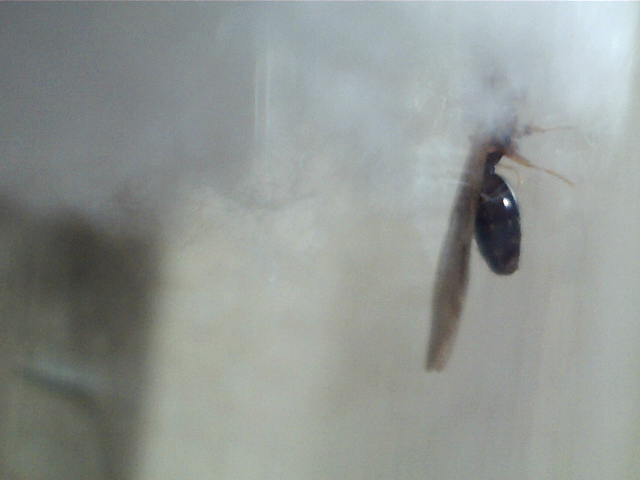
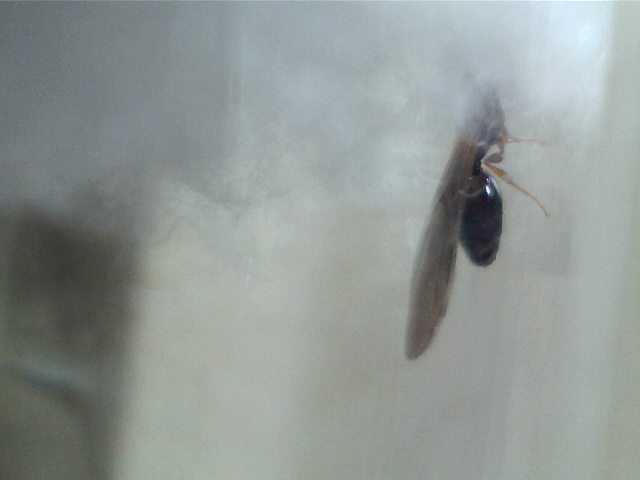
Camponotus vicinus, Crematogaster 1, Crematogaster 2, Formica francoeuri, *, *, Myrmecocystus testaceus, Novomessor cockerelli, Pheidole hyatti, Pogonomyrmex californicus, Pogonomyrmex rugosus, Solenopsis invicta
Both of them really.
0 members, 1 guests, 0 anonymous users